After the snowy weather that played havoc with the run up to Mother’s Day, there were high hopes that a splash or two of rain would not dampen Easter sales.
With the event having grown over the last few years as a card, gift and decorations event, there were high hopes that the third spring season would come good for all.
On the multiple front, John Lewis was among those to spread glad tidings of growing Easter sales, but indies too were full of Easter bounce. “We’ve had our best Easter yet!” a jubilant Victoria Robinson of Wishes in Cockermouth told PG Buzz. “Easter is the only Spring season which is growing. Product has hugely improved in the last few years, giving customers more choice. We’ve noticed more demand for captioned Easter cards, never before have we been asked for ‘Daughter and Son in Law’ Easter cards but this year we were, more than once. And we sold out of Great-Grandson and Great-Granddaughter Easter cards.”
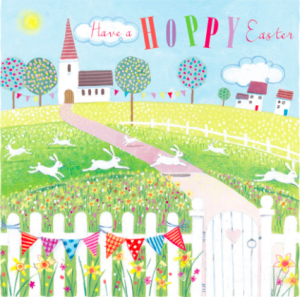
While Victoria feels that the extended Easter break sees more families getting together, “and a card marks the occasion. And if they’re not together, they will still send a card. We have learned from our customers that they see Easter as an occasion for keeping in touch too; sales of packets of Easter cards were up and often sold with a book of stamps and this sparks a domino effect – I received one, I’ll send one back!”
However, Wishes’ good experience was not echoed by all retailers with some feeling that potential sales for the event does not justify the widespread exposure at retail.
Jayne Griffiths, owner of Sentiments in Whitchurch, Shropshire admitted that she was disappointed by her Easter sales this year, which were down 25% on last year.
“Our general takings, including on cards, were down, even though this year we introduced exclusive chocolates and licensed Peter Rabbit from GUND. They both did very well as an alternative to eggs, but overall sales were disappointing.”
She feels that local competition, notably from Card Factory which had a large Easter offering, affected her trade.
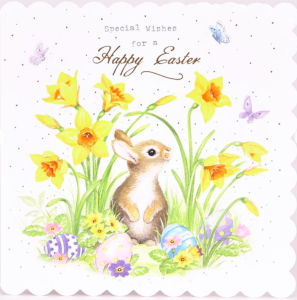
Meanwhile down in Brighton, Paul Jarman, owner of Creased Cards said that that once again the weather did act as a spoiler with the rain keeping customers away.
“We use the Easter weekend to focus on pushing our website and loyalty scheme to the many tourists in Brighton on a Bank Holiday weekend.
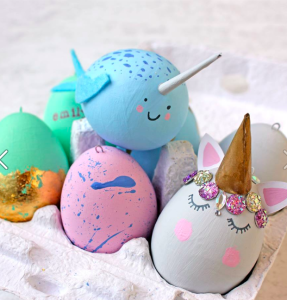
The main part of weekend tends to average out for us on a Bank Holiday weekend… It’s the Monday that makes it a good one or otherwise for us. Often with revenue at three times the normal Monday. Unfortunately this Easter, it was a pretty horrid weather here in Brighton, so it took the shine off the weekend.”
* Royal Mail’s Easter promotional activity involved celebrating the heritage of Easter card design as well as encouraging today’s youngsters to send Easter cards through a cute video.
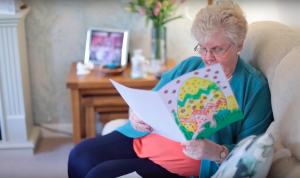
The film details the journey of a creation of an Easter card through to the young narrator’s Nanny’s reaction when she opens it. The video (hosted on YouTube) ends with the message from Royal Mail to ‘Send a card’.
Royal Mail also issued a press release explaining how the sending of Easter cards can be tracked back to 120 years ago when a stationer in Victorian England added an Easter greeting to a drawing of a rabbit.
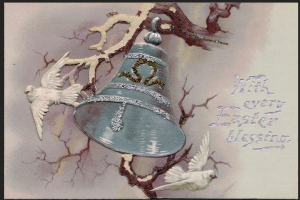
Hosting information and images of historic Easter cards on its website Royal Mail explains how originally, Easter cards came in the form of postcards. Only the stamp and the address were allowed on the back of the card, meaning that the message had to be written over the drawing on the front. This changed in 1905, when the postal service in Austria and Germany decided to separate the back of the card into two halves, leaving space for a message to be written on the back. The new layout was officially approved by the Universal Postal Convention in 1906.
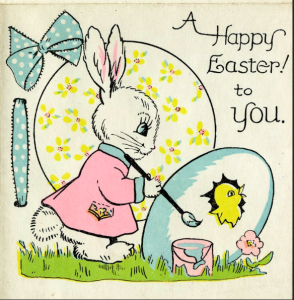
This change paved the way for the appearance of lambs, chicks, eggs and the Easter bunny on Easter cards, symbolising rebirth and fruitfulness. Young girls also featured on the cards to signify luck and hope. However, these were replaced with images of soldiers during the First World War, as well as the Easter bunny dressed in military attire, with the aim of gathering support for those fighting abroad.
The history of Easter cards are featured on Royal Mail’s online gallery http://gallery.royalmailgroup.com/easter
























